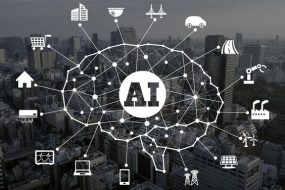
Whether creating a presentation for work, searching for a mate or just wanting to find out where to buy a box of Girl Scout cookies, there’s probably an app out there to help you do it. Unfortunately, there’s no app that actually explains what an app, short for application software, actually is or does. Here, we’ll take a high-level view of this term, including what it means, how it’s used and how it has evolved – and you don’t even need an app to read it.
What Is Application Software?
Computer software is the set of instructions and data that tells a computer what to do and how to do it. Software provides instructions to your computer’s hardware. Without it, your PC or Mac would be little more than a large paperweight. But software actually comes in three main types: system software, programming software and application software. System software includes all the stuff that makes up a computer’s operating system (OS), including device drivers, configuration files and other key system components. This is the software that tells the computer’s hardware what to do and provides a foundation for the system. Programming software, or middleware, works much like the plumbing in your home by invisibly keeping things running behind the scenes. Application software, however, is the most important type for computer users because it is used to achieve many of the tasks that make us turn to our computers in the first place, such as word processing, web browsing and data crunching.
Application software applies the power of system software. This is why when downloading software, you have to find a version that is compatible with your running operating system. In essence, that software draws on the OS to create a Word document, spreadsheet or PowerPoint presentation.
Applications from A to Z
As you may have surmised, there’s a world of application software out there. The reason is simple: Computers are used to complete a very diverse set of tasks. Thus, the application software category includes the following types:
Application Suite
This refers to multiple and related bundled applications, such as Microsoft Office, which includes Word, Excel, PowerPoint, OneNote and possibly others, depending on your suiteversion.
Content Access Software
his software is used to access and view content without manipulating it and includes browsers and media players.
Database Software
A database is a type of electronic filing system for the information used by various computer programs. Database software acts as the filing clerk for this system by keeping everything organized and storing, modifying and extracting database information. Large organizations use industrial-strength database systems like Oracle and Microsoft SQL Server. At a less intense level, you’ll see database systems like Microsoft Access and MySQL.
Educational Software
Designed for teaching or learning, educational software applications are able to run tests, track programs and include software, such as MATLAB.
Enterprise Software
Enterprise software refers to applications businesses use to solve business-level problems. This category includes software for billing, payment processing and human resource (HR) management. (Learn more about this category in Enterprise Computing: What’s All the Buzz?)
Information Worker Software
This type of software is closely related to enterprise software, but it refers to the applications used by the individual employees of a business to create and manage information. Examples include word processors, spreadsheets and media editors.
Multimedia Software
Multimedia software allows users to create and experience text, graphics, video and animation in an integrated way. There is some overlap with content access software, but multimedia software is specific to multimedia and includes applications like VLC Media Player, Windows Media Player and Winamp.
Presentation Software
If you’ve ever created a slideshow presentation, you are already familiar with this type of application. Presentation software is designed to arrange information for use in a demonstration or display. Examples include Microsoft PowerPoint, Keynote and SlideRocket.
Product Engineering Software
This type of software is essentially an application for applications and used to design and develop software products. The integrated development environments (IDE) and programming tools used by software developers fall into this category.
Simulation Software
Simulation software models real phenomena by using a set of mathematical formulas. This application type is used for research and design, as well as entertainment. Simulation software applications include flight simulators, weather simulators and feedback control systems.
Spreadsheet Software
Spreadsheet applications allow users to compile data and perform calculations in a spreadsheet format. Common examples include Microsoft Excel, Lotus 1-2-3 and Apple Numbers.
Word Processing Software
Nearly everyone has experience with word processing applications. Whether writing a letter or creating a resume, this software allows you to create and edit these documents. Common examples of word processing software include Microsoft Word, iWork and Google Docs.
Applications and Platforms
In recent years, classifying applications according to computing platforms has become more complicated. A platform is the hardware/software combination in which an application runs. In the early days of computing, this amounted to a computer operating system, which is why some software works with a Windows operating system, while other software operates only on iOS or Unix. Over the years, however, a few dimensions have been added with the development of new software delivery methods. The buzzword for this phenomenon is cloud computing, which means that many applications no longer rely on operating systems. Rather, they run on the web and may be accessed through a browser.
As you may have guessed, the final application platform – increasingly becoming the most important – is the mobile platform.
From Applications to Apps
Apps for mobile devices have become a huge part of the application software market, leading to the ubiquitous use of the term “app.” In fact, in most cases, this term is used to refer to a mobile application. As it turns out, this shortened version of the term is very apt when it comes to mobile applications because this type of software is often much smaller and more specific than that on a PC. So, while a slick software suite provides full functionality, an app usually has a narrow and specific function – or very little function at all, as many mobile applications are designed for entertainment. (To learn more about mobile apps, see Mobile Device Management vs. Mobile Application Management: The Big Fight Continues.)
This type of application was popularized by Apple through its App Store, where applications are sold for a few dollars apiece. These apps work only on Apple devices. So, other companies have followed Apple’s lead, creating apps for Android and BlackBerrydevices. In fact, in 2015, more than 200 million apps were downloaded – per day – totaling 75 billion apps for the year. In 2016, that number jumped to 90 billion apps, lending credit to the notion that there truly is an app for just about everything you could imagine (and several things you couldn’t … or wouldn’t want to).
An App to Predict the Future … of Apps
As with all things in technology, the evolution of application software is likely to take some unexpected turns. In the near future, however, we can expect to see less emphasis on traditional desktop PC software and an increasing shift to cloud and mobile applications. This represents potential privacy and security risks, and benefits, in terms of user accessibility. Maybe the next stop is applications that better balance these risks and rewards. This may be the future users want, but will they get it? So far, there’s no app to predict that.









